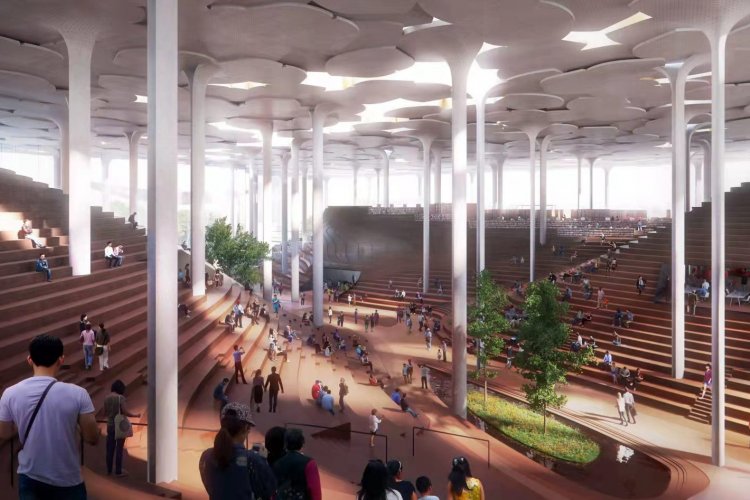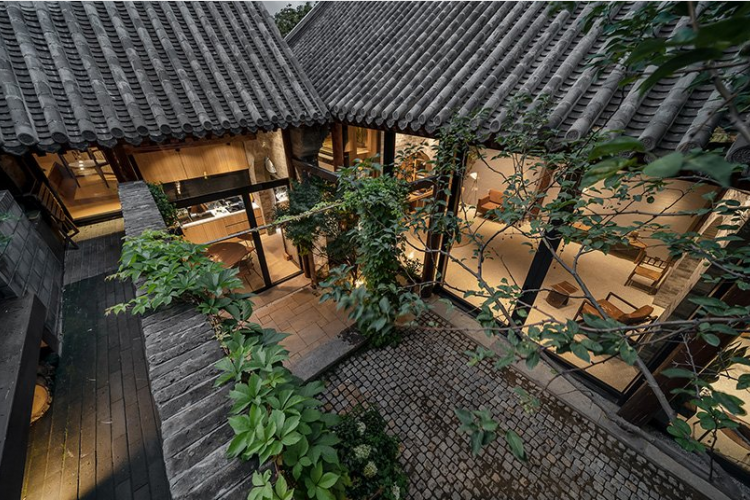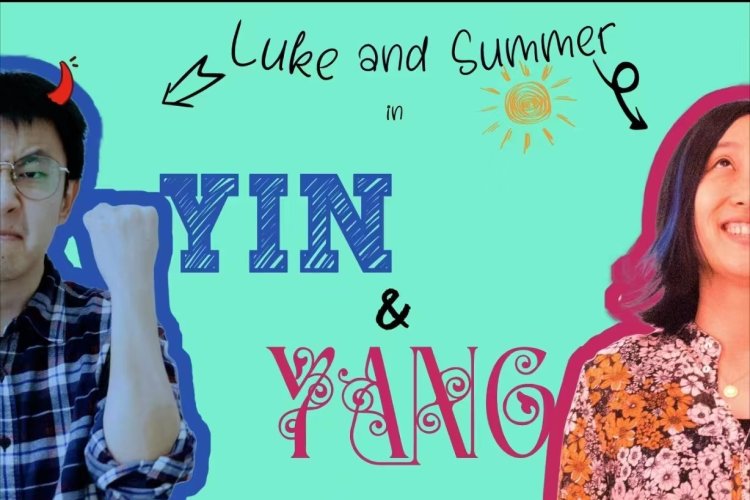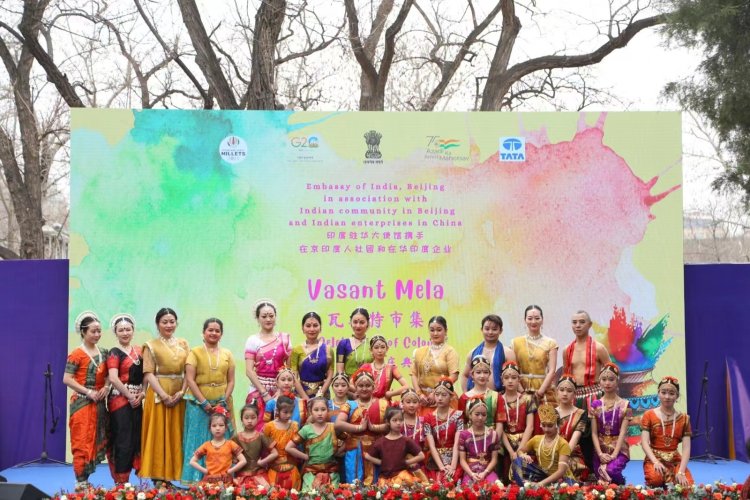Yi Hotel: 798’s First and Only Boutique Hotel
Though her background is in finance, one of native Beijinger Shauna Liu’s great passions is art. Here, she tells us how her many years of globetrotting influenced the design of Yi Hotel – 798’s first and only boutique hotel – and why art should always be inclusive.
You’re originally from Beijing – where else in the world have you lived, and what brought you back here? Honestly, I’ve loved every city I’ve ever lived in. Singapore, New York, Hong Kong, Paris, San Francisco – they’re all different. I first left China in 1984 to attend university in the States, where I worked for an investment bank for a while, before relocating to Hong Kong and then Singapore. I actually lived in Hong Kong for eight years; I have a Hong Kong permanent residence card. But after so many years in banking, I felt like I wanted to do something real, take it easy. So I took about four years off to travel and live in France, then came back to Beijing and opened up this hotel.
Your professional background is in finance; how were you drawn to art, design and hospitality? I always tell people that part of my brain is always thinking about money, and the other part of me always wants to do something related to design. I’ve always had a strong passion for art; in fact, I think everyone has a bit of creativity in their heart, some people just have more opportunities to explore it. I’m very fortunate to have this chance with designing hotels. My first hotel was the Beijing Courtyard Hotel, which was written up by the New York Times when it opened. When I saw an available courtyard, I wanted to design it. It was the same thing with my new place, Yi Hotel – when I saw this opportunity in 798, I grabbed it.
But why 798? What made you take interest in opening a hotel in an art zone? Besides the historical landmarks of Beijing, there’s 798 – a place to go to try to understand modern China. If I go to New York, I always like to go to Soho – that’s the special area of New York. Now, if I go to Beijing, 798 is what’s unique about China. My previous hotel was all about hutongs, which is a crucial part of Beijing history. 798 represents a newer, more modern part.
Only in Beijing do we have such a huge concentrated area of so many art galleries together. That’s part of the reason why I decided upon this location. It’s not in the center of the city, but rather close to the Fifth Ring Road. I used to always visit 798, but every time, I felt rushed. I craved a rest stop, something comfortable and relaxed.
You designed the hotel from the day you took it over two years ago – what used to occupy that space and how did you adapt it to fit its new purposes? We wanted it to look industrial, so we kept the red bricks outside. We aimed to match the style of the neighborhood; I didn’t want us to stand out and look too noisy, I wanted to fit in. But when you walk inside, it feels very different.
The first floor has a very Hong Kong-influenced, colonial feel, with high ceilings and doors with high arches. I’m by no means promoting colonialist culture, but I like the effect of mixed cultures in design. In terms of color, I kept it simple with muted colors like black, white and grey, with the only bright colors being green and blue – subtle, cosmopolitan colors.
My goal was to create a peaceful environment where we could present good artwork. The artist I hired to help out with some of the design is not a professional, he’s a businessperson who just happens to love art. Whenever he has a chance, he spends time in Southeast Asia – and the moments he captures in photos, without any technical touches, my God. It’s not all about the top professional artists; my hotel is a place for everyone who just loves art. It’s not about your name or background, it’s just somewhere you can feel relaxed and connected, and think that maybe one day your art can also be featured there. It’s a place for everyone.
How did your jet-setting ways affect the direction of your design? When you walk into the hotel, you don’t feel like you’re anywhere in particular – it could be here or there, with a mixture of a bunch of different cultures. Actually, my time in Hong Kong really influenced my design of the hotel. That city is really something special. Before I went, I thought I was going to just stay for three years. But time flies when you’re there. The longer I lived there, the more I loved it. Admittedly, one part of Hong Kong is very superficial – people are very into how much you’re making and spending. Everything is about making money. But another part is about cultural sophistication – a combination of colonial culture and traditional Chinese culture. It retains a distinct Chinese feel, but with very high international standards. I’ve carried those same principles into my design of Yi Hotel.
What recommendations do you have on traveling in style? Always stay in a boutique hotel – they offer much more personalized service than the big ones.
What are your favorite stores and exhibits in 798? I have a whole bunch, but just to name a few – the UCCA, the Galleria Continua, the Beijing Commune, the Long March and White Space.
What would you say to someone who had qualms about staying in 798? Give us your best sales pitch. The art in 798 is quite focused on the Cultural Revolution, but also modern society as well. You can easily spend up to three days there. For anyone who’s passionate about art, or just wants to understand a part of modern life in China, this hotel offers the perfect introduction to that. Then you can visit the Great Wall and the Forbidden City, and combine all of your experiences.
Beijing Commune Tue-Sun 10am-6pm. Dashanzi Art District, 4 Jiuxianqiao Road, Chaoyang District. (8456 2862) 朝阳区酒仙桥路4号大山子798艺术区
Galleria Continua Tue-Sun 11am-6pm. Dashanzi Art District, 2 Jiuxianqiao Lu, Chaoyang District. (6436 1005) www.galleriacontinua.com 朝阳区酒仙桥路2号798大山子艺术区
Long March Space Tue-Sun 11am-7pm. Dashanzi Art District, 4 Jiuxianqiao Lu, Chaoyang District. (5978 9768) www.longmarchspace.com 朝阳区大山子艺术区
Ullens Center for Contemporary Art (UCCA) Tue-Sun 10am-7pm. Dashanzi Art District, 4 Jiuxianqiao Lu, Chaoyang District. (8459 9269) www.ucca.org.cn 尤伦斯当代艺术中心, 朝阳区酒仙桥路4号大山子艺术区
White Space Tue-Sun noon-6pm. Airport Service Road, No. 255 Caochangdi, Chaoyang District. (8456 2054) 朝阳区机场辅路草场地255号
Yi Hotel Unit 1, 706 Houjie, 798 Art District (enter from north gate), 2 Jiuxianqiao Lu, Chaoyang District. (6436 1818) 朝阳区酒仙桥路2号798艺术区内706后街1号






